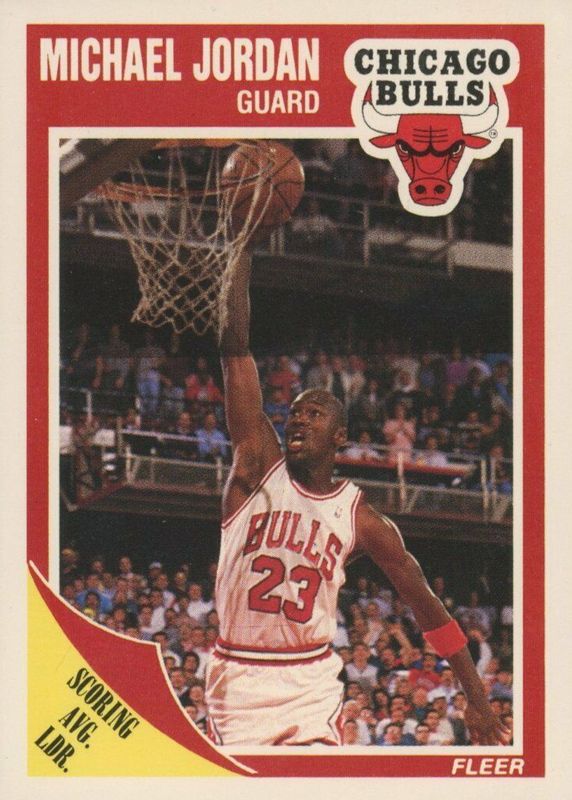
In the vibrant world of basketball card collecting, tales of a select few cards often dominate conversations—none more so than the fabled 1986 Fleer Michael Jordan rookie card. Like the legendary Air Jordan himself, this card soars above the rest, epitomizing the pinnacle of collector’s ambition. However, as dazzling and desirable as that rookie card may be, a scrappier, less-heralded companion is quietly climbing the ranks: the 1989 Fleer #21 Michael Jordan card.
At first glance, this 1989 iteration doesn’t exactly scream historical significance or command the sort of reverence that a rookie card would. Yet for seasoned collectors with an eye for undervalued opportunities and wallets that resist the sting of rarity-charged pricing, this card provides a compelling case for consideration. Despite not being draped in the unmistakable aura of a rookie card, it’s emerging as a sensible, strategic investment option—one that has been sneaking up in value quietly, yet steadily.
To illustrate, a PSA 10-graded 1989 Fleer would set you back approximately $1,001 in 2021. Fast forward a few years to June 2025, and the same pristine card demands around $1,200, representing a respectable 20% increase. In a landscape suffused with fervent bidding wars and astronomical prices, this type of growth, while not necessarily jaw-dropping, is appreciatively consistent. It speaks volumes about a card that is settling into its own niche within the hobby.
Delving deeper into the numbers brings some light to why this card is capturing more collector interest. According to PSA, the well-respected grading service, there are roughly 1,240 copies graded as PSA 10s, with over 11,000 residing in the PSA 9 tier. These might seem like high figures, but the accompanying demand ensures that prices are just, reflecting genuine collector interest rather than transient hype.
The climb in the card’s perceived value is not limited to the mint or near-mint arena either. Amazingly, even raw, ungraded copies of the 1989 Fleer Jordan have seen a notable leap in price. A card that could once be snagged at a modest six dollars in 2022 is now likely to set a budding collector back by twenty dollars. This might not build headlines or decimate bank accounts, but a more-than-tripling in price showcases market dynamics typically reserved for more ‘exclusive’ collectibles.
So, what’s fuelling the ascent of this under-the-radar card? A confluence of factors appears to drive its newfound spotlight. The increasing cost of submitting cards for professional grading nudges collectors towards pre-slabbed options, cutting out potential risks and delays. There also exists a growing nostalgia for the dynamic b-ball rhythms of the late ’80s, a golden era that brought NBA glory and heralded the paradigm-deafening slam dunks of His Airness. Plus, there’s the simple allure of owning a slice of authentic Jordan history without overshooting one’s budget.
Unlike loud, flashy inserts or those emblazoned with rare promo embellishments, the 1989 Fleer Jordan is simplicity at its best—a card from MJ’s prime that represents an era more than a singular spectacular moment. It’s MJ unobtrusively in peak form, forever associated with the rise of Bulls mania. It’s about sentimentality that whispers rather than shouts, a staple for the thinking collector who values long-term timing over immediate gratification.
For those collectors keen on value-yielding prospects and the cozy comfort of a long-term hold, the 1989 Fleer card speaks volumes. Whether you’re weary of chasing after the usual famed suspects, or merely drawn to the earnest pull of a mature basketball history, this particular MJ card truly merits consideration. Just as Jordan dominated the courts without needing rookie accolades to validate his prowess, so too does the 1989 Fleer stand out, not seeking the spotlight, but still promising meaningful, tangible rewards to those insightful enough to recognize its merit.
